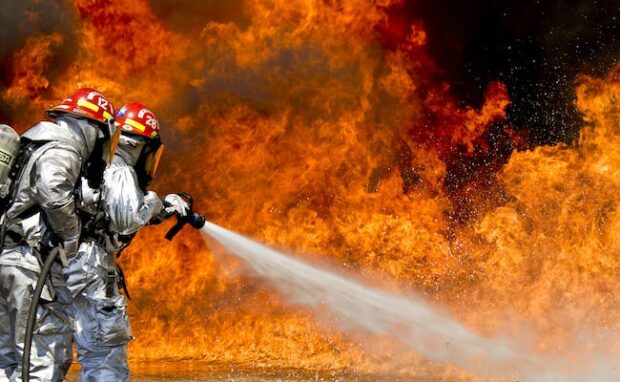NASA explains fire experiments
The National Aeronautics and Space Administration is experimenting with fire on the International Space Station. The space agency says it conducts tests to understand how fire behaves in different environments and how to prevent and extinguish it. As a result, they could safeguard crew members, equipment, and spacecraft.
Things behave differently on Earth and in outer space; that is why scientists have been launching plants and animals. Understanding how they respond to zero gravity could help us discover properties we couldn’t see on Earth. Soon, these insights could expand what we know about combustion on Earth.
This article will explain why NASA has been “playing” with fire in outer space. Later, I will discuss its other interesting projects, such as an astronaut robot!
What is the purpose of the NASA fire experiments?

The space organization’s Glenn Research Center conducts these interesting tests in the ISS’s Combustion Integrated Rack. Interesting Engineering says the CIR’s investigation types have different chamber inserts:
- Multi-user Droplet Combustion Apparatus
- Advanced Combustion via Microgravity Experiments (ACME)
- Solid Fuel Ignition and Extinction – Growth and Extinction Limit (SoFIE)
- Burning and Suppression of Solid (BASS)
The Flame Extinguishment Experiments (FLEX) is one of those experiments. It studied the effectiveness of fire suppressants and discovered a new phenomenon called cool flames.
These flames continue to “burn” after extinguishing the visible flame under specific conditions. Also, cool flames produce carbon monoxide and formaldehyde, unlike regular ones that make water and carbon dioxide.
Studying these unique fires could lead us to develop more efficient and less-polluting automobiles. Cool flames die on Earth, so NASA studies them in space microgravity.
ACME is another test that uses the CIR to examine fuel efficiency and pollutant production in Earth combustion. It is a set of independent studies that improve spacecraft fire prevention and our understanding of flammability.
For example, its Burning Rate Emulator burned gaseous fuels under specific conditions to simulate the flammability of solid and liquid materials. As a result, experts could confirm whether existing flammability tests are effective.
BASS examines how to extinguish fuels burning in microgravity. It considers flame geometry, characteristics of the materials, and the extinguishing methods.
You may also like: The best tablets for kids
SoFIE-GEL studies how fuel temperature affects material flammability. One of its experiments, Sapphire, tested a fire in microgravity on the uncrewed Cygnus cargo spacecraft.
Another is Confined Combustion, which received an ISS National Laboratory sponsorship. It examines flame spread in confined spaces of different shapes.
Researchers want to see how fires would react to surrounding walls. Consequently, this experiment could guide fire safety codes in space and on Earth.
Other NASA experiments
Perhaps one of the space agency’s more exciting experiments is the Valkyrie. It is a humanoid robot that will accompany astronauts in future NASA missions.
NASA has been developing its humanoid robot since last year, giving it numerous capabilities. For example, astronauts can power Valkyrie with a wall connection or a dual-voltage battery.
The latter only works for an hour but could be a great backup power source. Also, it may enable the robot to work far away from its wired power source.
“We’re targeting having this system online 22 hours a day,” Apptronik Chief Technology Officer Nick Paine said. “This does have a swappable battery, so you can work for four hours, swap the battery, and then keep going in a very quick duration.”
People could replace it with a mass simulator and capacitor, mimicking the battery’s electrical and mechanical properties. Moreover, the robot’s head has a Carnegie Robotics Multisense SL sensor, and its torso has hazard cameras.
These parts give the humanoid robot situational awareness. The torso also has a series of elastic rotary and linear actuators facilitating motion between the torso and pelvis.
You may also like: AI scientist facilitates research in multiple fields
The pelvis contains elastic rotary actuators and rotation joints to maintain the robot body’s stability. Moreover, the upper arms have four actuators with quick disconnects for convenient shipping and servicing.
The hands and lower limbs also have similar flexibility and serviceability. “Robots like Apollo are designed with modularity in mind to be able to adapt to many applications,” NASA Dexterous Robotics Team Leader Shaun Azimi stated.
“We’re not trying to replace human crews. We’re really just trying to take the dull, dirty, and dangerous work off their plates to allow them to focus on those higher-level activities,” he explained.
Conclusion
NASA has been experimenting with fire at the International Space Station. The space agency wants to learn how fire behaves in microgravity to extinguish it in missions.
The findings could help keep astronauts, spacecraft, and equipment safe, increasing the safety of future explorations. More importantly, the fire experiments could provide insights into combustion on Earth.
This quirky space experiment could save lives and property on our Blue Planet. Learn more about the latest digital tips and trends at Inquirer Tech.